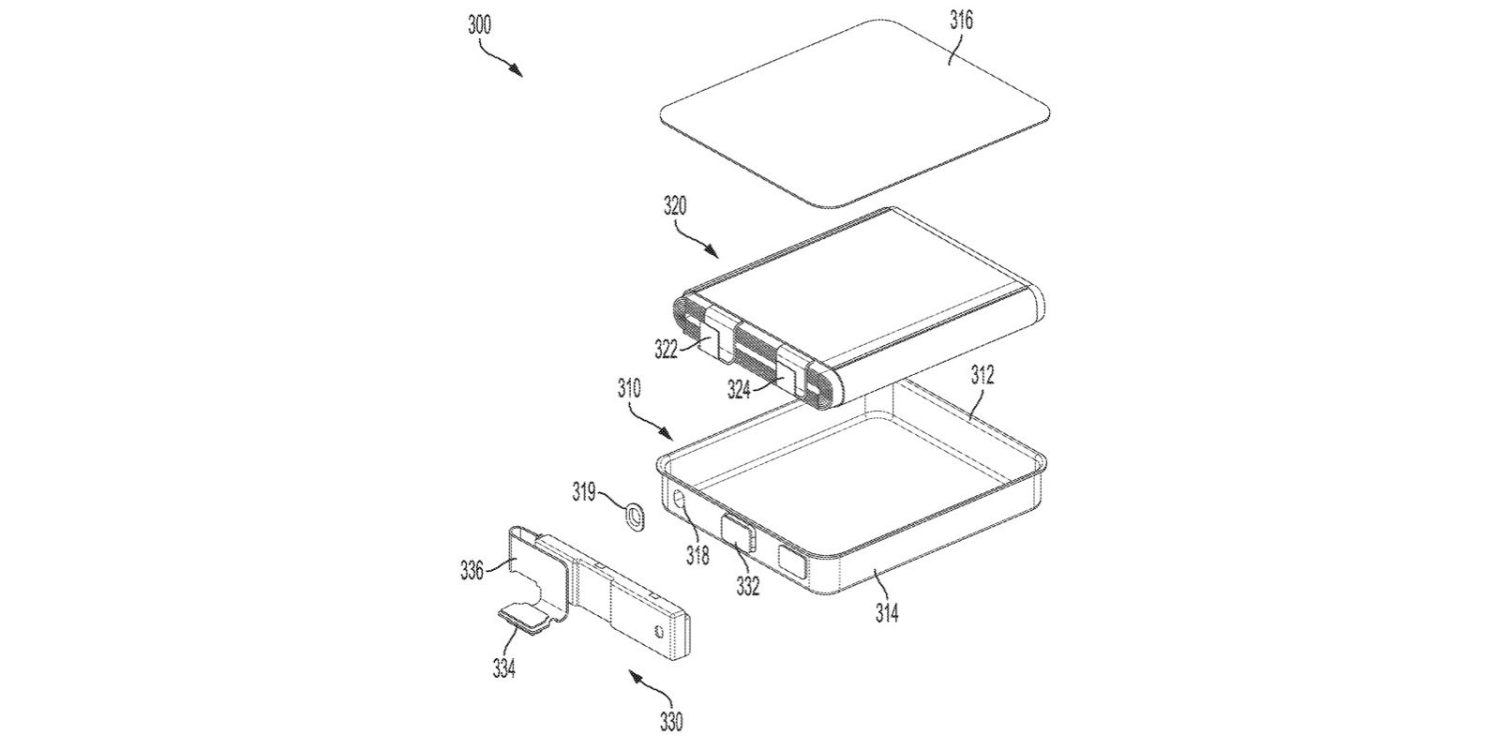Earlier this week, Apple filed a patent application with the U.S Patent & Trademark Office. The application talks about a battery system for reducing the spacing between components in an electronic device. The battery arrangement consists of a housing surrounding an electrode assembly and a connection module.
This patent would solve the problem that Apple created itself in 2015 with the 12-inch MacBook batteries. The tech giant made the transition from rigid rectangular batteries to pouches that be shaped to fit the given space. At the time, Apple considered it to be a breakthrough technology since the pouches freed up space inside the device.

Apple files a patent application to improve the devices battery life
Apple explained in the patent the problems it faced due to the pouch technology.
Lithium-polymer batteries are commonly used as rechargeable batteries to provide power to a variety of electronic devices, including laptop computers, tablet computers, mobile phones, personal digital assistants (PDAs), digital music players and cordless power tools. Lithium-polymer batteries can often include electrodes and electrolyte sealed in an aluminized laminated pouch. These pouch batteries can be used in space-constrained portable electronic devices such as mobile phones, laptop computer, and/or wearable devices.
The sealed edges of the pouch battery can result in excess pouch material and the pouch can have a positive voltage that requires the exterior surface of the pouch to be isolated from conductive surfaces in the electronic device. To accommodate the excess pouch material and isolate the conductive surface of the pouch battery, the pouch battery needs to be smaller than the area provided in the electronic device, resulting in wasted space. This is especially important in space-constrained portable electronic devices, where space is at a premium and the devices are commonly designed to accommodate the largest batteries possible.
Apple further explains by giving an example, in some compositions the battery holds an electrode and cathode enclosed by a metal covering. The battery can be assigned a fitting size to optimize the open space in the electronic device without the need for spacing between the battery housing and other components of the electronic device.
A battery system is disclosed and includes the following: an electrically conductive housing having a base portion and a lid that cooperate to define a hermetically sealed interior cavity, the base portion including a bottom wall and a sidewall extending upward and away from the bottom wall to form a flange around a periphery of the housing, wherein the lid overlaps with a portion of the sidewall to form a flange and the sidewall contains an opening for selectively hermetically sealing the housing; an electrode assembly disposed within the interior cavity and including one or more anode layers, one or more cathode layers, and a separation layer between each of the anode and cathode layers, wherein the electrode assembly is electronically coupled with the housing to form a common ground; electrolyte disposed within the housing around the electrode assembly; a connection terminal electrically coupled to the electrode assembly and extending through the opening in the sidewall of the housing; and an electrically insulative spacer extending circumferentially around the connection terminal to electrically isolate the connection terminal from the housing.
If Apple manages to succeed with this idea, the fans could possibly get to witness a MacBook with further improved battery capacity, excluding the need to increase the thickness of the MacBook.
Read More:
- Apple patents reveal it is researching ways to wirelessly charge an iPhone or Apple Watch with an iPad or Mac
- Apple is working on a smart ring for AR, VR and MR applications as per patent
- New patent reveals that Apple is working on expanding haptic feedback to MacBook
- A new patent reveals that Apple is working on an iPhone MagSafe charging port